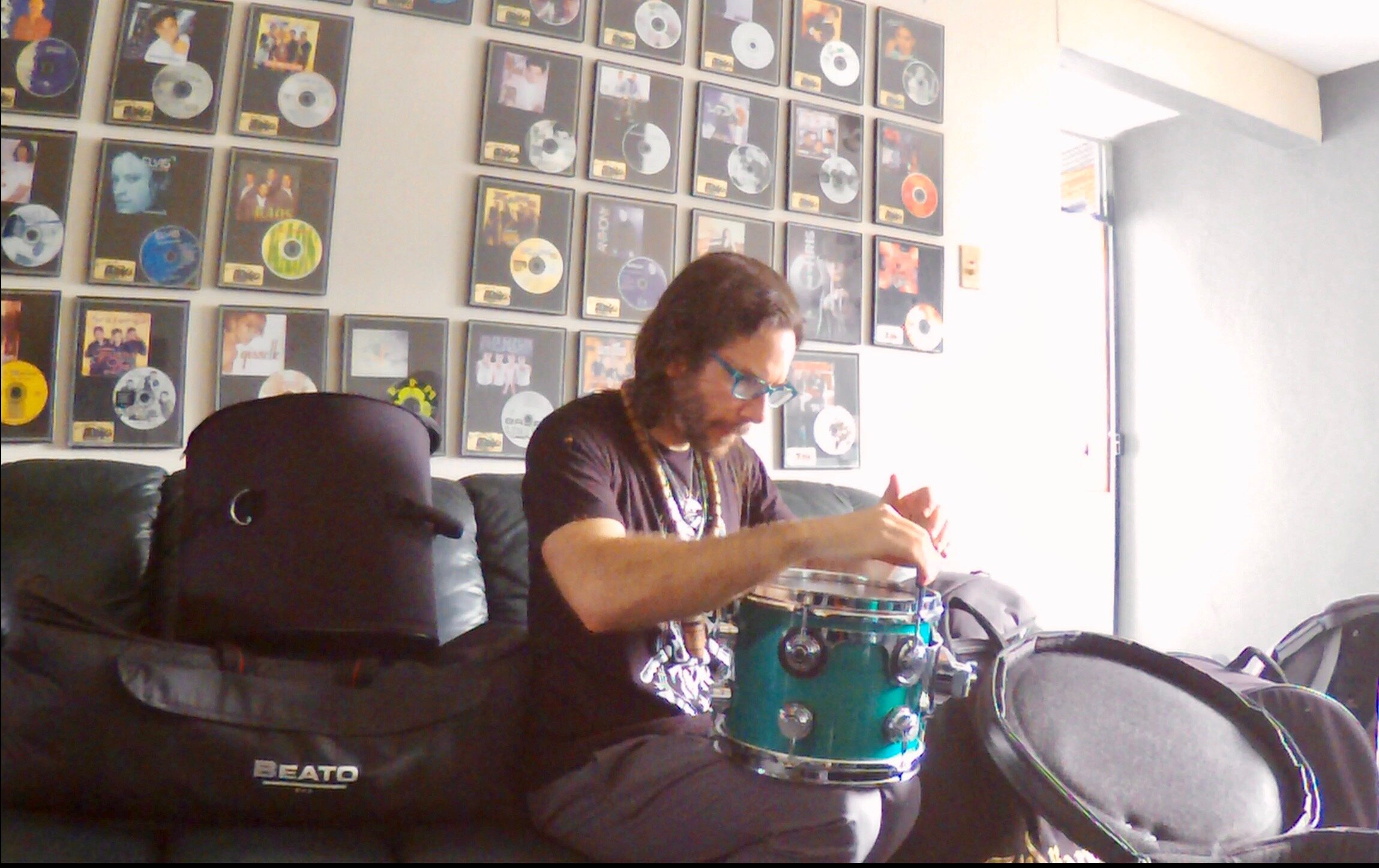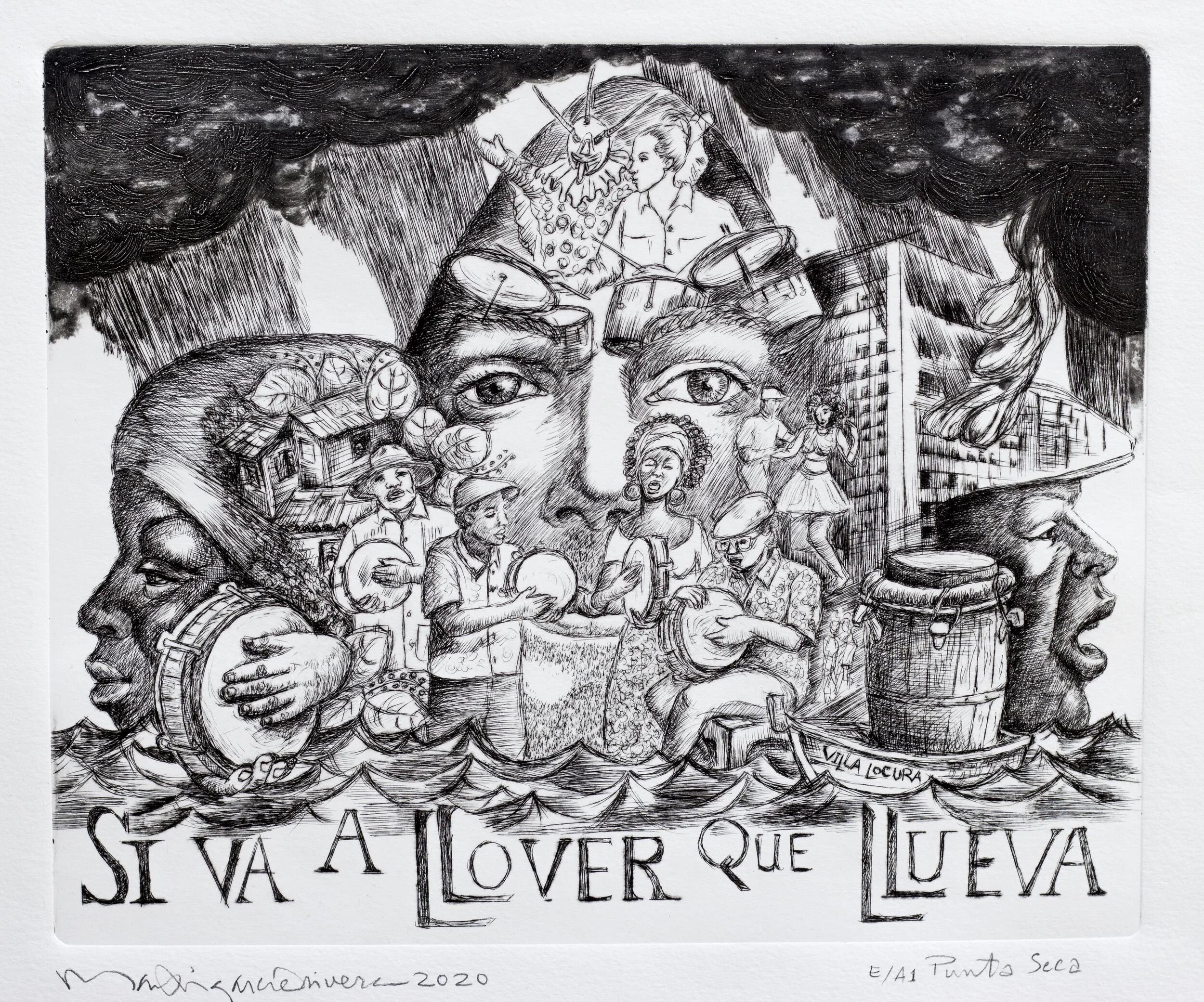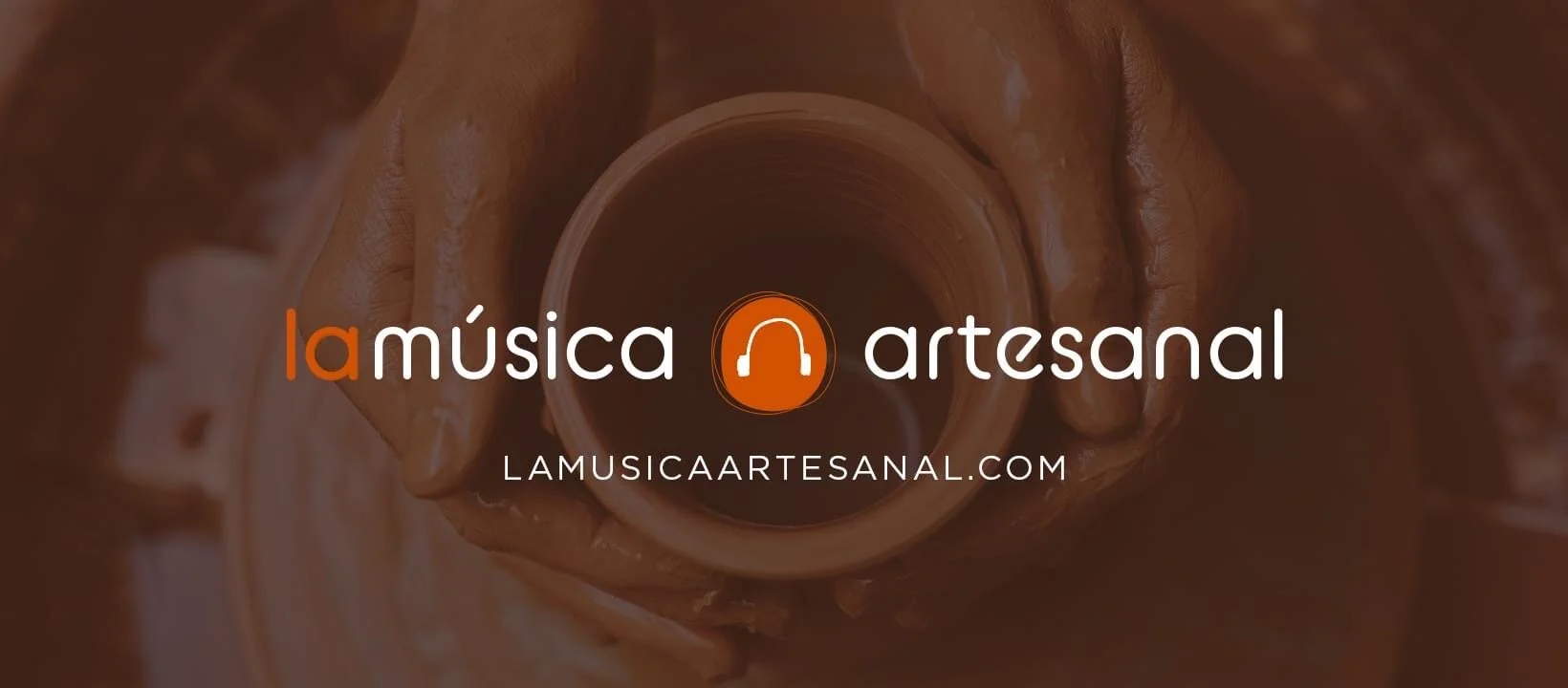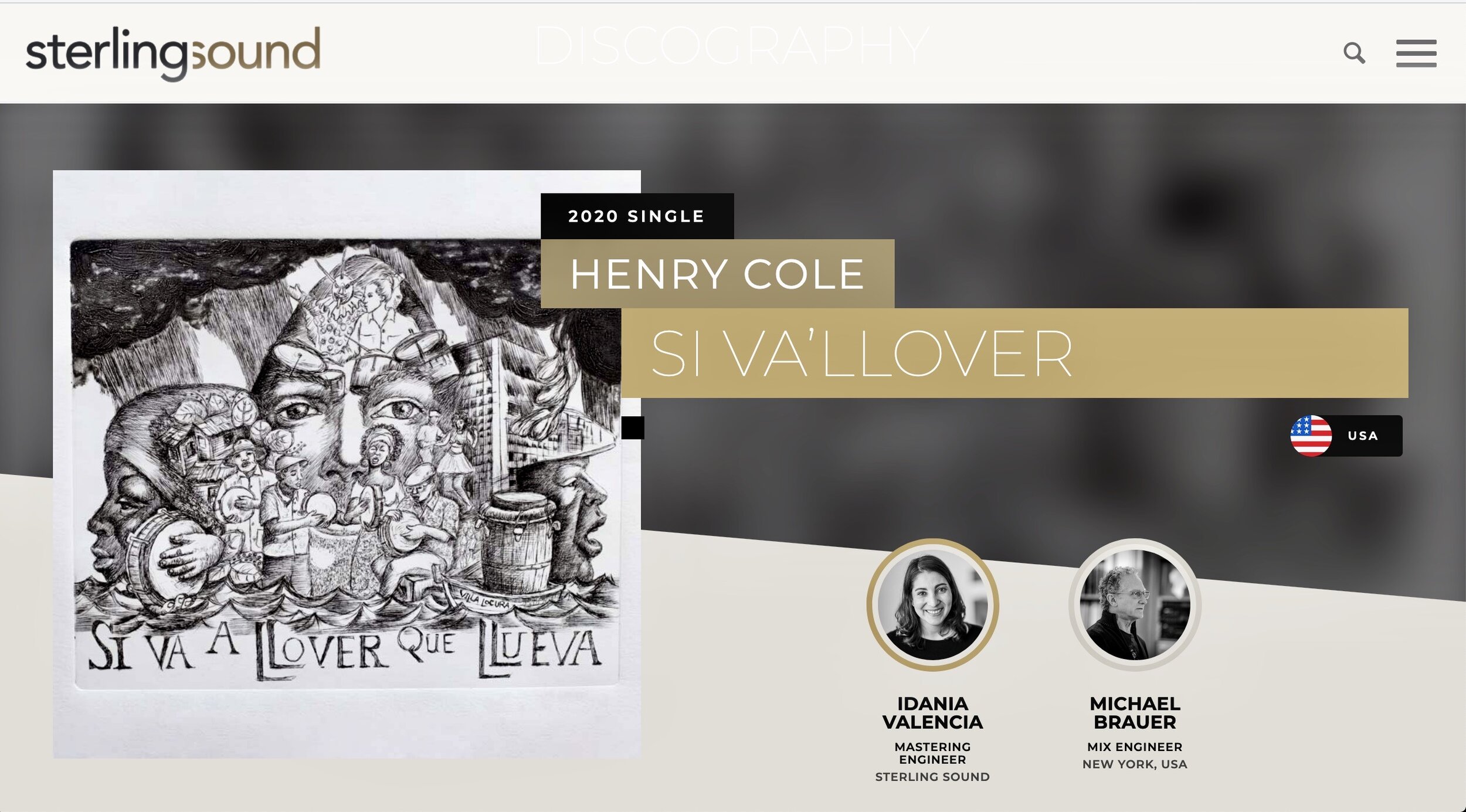“Si Va’Llover” and the Advent of La Música Artesanal
Henry Cole & Villa Locura have released a new song featuring Alex López ‘El Callejero’ — “Si Va’Llover”— and a new form of making and sharing music is born.
“The ‘mission,’ was to create an aggressive, punchy, in your face, groovy, virtuosic sound” - Henry Cole
Alex and Henry get together
Alex López and Henry Cole met in Mayagüez, Puerto Rico sometime around 1992 when Henry attended the Manuel A. Barretto School.
Two images of Alex have remained forged in Henry’s memory. One is of Alex hanging out with Henry’s oldest sister, Tidzia Cole, and her friends in front of his grandmother Angelina Simon’s house on Calle Estación. The other is of Alex watching him from a little store next to the Cundo Rovira Pharmacy, where they sold “icys” (snow cones) and “empanadillas” (meat pies). Henry sensed that Alex was letting him know with his eyes that he was looking after him.
In 2006, the two met again in New York City during a Bomplenazo in which Henry participated as a guest of Los Pleneros de la 21. Alex was part of the group Cocolay y sus Pleneros. As soon as they discovered they’re both musicians, they knew they wanted to collaborate. Whenever they met up, they talked about doing something together.
The opportunity arose in 2019. Henry was to appear with his group, Villa Locura, in Mayagüez for the first time, and he invited Alex to join them. He also asked Alex if he had a song that he’d like to adapt for Villa Locura. Alex sent him “Si Va’Llover.” Henry listened to several versions of the song and created a new arrangement within a couple hours. And then the gig in Mayagüez was cancelled.
Henry performed “Si Va’Llover” in Santurce last December and although Alex didn’t sing with him then, it was clear that people loved the song.
In 2020, Henry decided to record the arrangement of “Si Va’Llover,” this time with the participation of Alex López and a dream band. This is the result!
About the process
The recording of the song entailed two experiments. The first was for Henry to see how his music would turn out with Villa Locura, his band made up of local Puerto Rican musicians, with the exception of keyboardist Jason Lindner.
The second experiment was to explore the legendary AQ30 Studios in Bayamon. Which during the 1990s Merengue era recorded many greatest hits. Perhaps the most famous was, Elvis Crespo’s megahit “Suavamente.”
Discussing the process, Henry says, “There’s a lot of analog equipment from that era that wasn’t being used because most of the work now is done with Pro Tools. I wanted to get the gears cranking again on the machine that had been so successful.
I stared listening to some of the albums that were recorded there to relate the space to the music. I called trumpeter Luis Aquino and asked him how they recorded and what kind of equipment they used. Every time I saw the founder and recording engineer, Ricardo Marty I asked him a thousand questions and slowly I gathered fascinating information about the use and the history of the space.
Through these experiments I got a sense of what it would be like to record my next album in Puerto Rico.
At one point I felt that the equipment and the space spoke to me. They welcomed me. This was confirmed in the takes that we recorded. Especially when I saw how the artists shone as their parts were added, and how easy it was to do. It took Alex only one and a half takes to record his vocals. ‘I put on my red headphones and went on a trip. I felt everything flow at once,’ he told me.
We only had one rule in the studio: no plug-ins. The sound had to come from the subject to the analog machines without ‘filtering.’”
About the art
The artwork was inspired by the Portafolio de Plenas series, a set of prints created by the Puerto Rican painter, printmaker, calligrapher, Lorenzo Homar, and the draftsman, graphic artist, muralist, and illustrator Rafael Tufino, who celebrated the Afro-Puerto Rican form of music in the 1950s.
Henry called up artist Martin Garcia Rivera, with whom he had spent some time a few weeks earlier. Martin is very familiar with the work of Homar and Tufiño, and has a lot of respect both for them and for Puerto Rican culture.
“Martin’s process was an incredible learning experience for me. In the middle of the pandemic he sent me photos and meditations about his process for creating the piece, a process called Intaglio, using Punta Seca. One day Martin called me and I heard the joy in his voice, and knew that he had succeeded. That call lasted about three hours. We talked a lot about the painter, Francisco Oller, Puerto Rico, our culture, and Martin’s story.”
“The press is manual, it's like traveling back in time to a hundred, two hundred, even five hundred years ago. The past is the present with different actors and all that today has to offer.” — Martin Garcia Rivera
La Música Artesanal is born
Once the “master” was finished, Henry shared it with some people in the music industry, garnering the usual results. Some said, “Wow, this amazing, it’ll stick.” And others said, “We don’t know if it belongs on a playlist, it’s too long, it’s too instrumental, it’s too jazzy, it’s regional, people consume a more urban sound.”
The story was the same when presented “El Diablo” with Tito Allen and “Caminando” with Tego Calderón.
Henry was aware that even if there were some interest, he would have to give away his song for streaming, which generates less than a penny per-play. And with a schedule of canceled concerts for the rest of the year, he realized he wouldn’t be able to continue in that direction, nor could he expect the industry to dictate what he should do with his music.
So Henry decided to take inspiration from the figure of the artisan, using this analogy: Craftspeople make their handiwork —whether it be jewelry, or furniture, or carved nativity scenes— but they would never expect to make a living by simply giving it away as if it were a free sample. This would leave the artisan with no profit to buy food or materials.
For example, there's craft beer, craft coffee, craft jewelry. A craft beer is more expensive than a regular beer. Why? Because of the quality of the ingredients, the process by which it's made, the attention to detail.
Henry developed the idea of launching his own platform to sell his art in conjunction with visual designer Abdiel Flores.
La Música Artesanal also seeks to bring together artists who share this same thinking and passion for their crafts. In this way, they'll form a mercado of craft musicians.
“And so,” says Henry, “I offer you here my música artesanal, created with the best musicians, artists, engineers, machines, and processes.”
“I wanted to present my vision of New Plena and send a message to the other Plena, Bomba and Salsa Bands in Puerto Rico, that, This is 2020 and Henry Cole and Villa Locura is here! . Aside from the lyrics, I composed all the parts. I brought in the bassist Ricky Rodriguez, who gave me the aggressive, nasty bass lines I was seeking. This virtuoso type of bass playing happens in Merengue but rarely in Plena.
Also, there is Trap (a sub-genre of hip-hop ) in there played by musicians not computers. ”
Henry and Villa Locura’s dynamic sound and Alex’s powerful lyrics take Plena into the 21st Century!
PUNTA SECA BY MARTIN RIVERA GARCIA
Credits
Produced and directed by Henry Cole
Henry Cole – Music,Drums
Alex López – Lyrics, Vocals
Martin Garcia Rivera – Art
Michael Brauer – Mixing Engineer
Charlie Pizarro - Seguidor
José Rey Ramirez “Moncho Tarima” - Requinto
Emanuel Santana - Punteador
Axel Rodríguez – Güiro
Jason Lindner - Keyboards
Piro Rodríguez – Trumpet
Jahaziel García - Trumpet
Jonathan Acevedo – Tenor Sax
Víctor Maldonado – Baritone Sax
Javi Pérez - Guitar
Giovanni De La Rosa - Guitar
Ricky Rodríguez – Bass
Jay Laboy - Coro
Antoniette Rodríguez - Coro
Sebastián Otero - Coro
Glorimar Nogueras –Coro
Recording & Editing
Giovanni De La Rosa
Luis Rodríguez
Wendell Sanders
Rubén Morales
Matt Burr
Hector Espinoza
Fernando Reyes
Idania Valencia - Mastering
Abdiel Flores - Cover
José Díaz - Video
Joealis Filippetti – Promotional voice over
Erin Goodman – Press Release Editor
Thomas Peña - Editor
Executive Producers
Henry Cole
Rubén Morales
José Rey Ramirez













